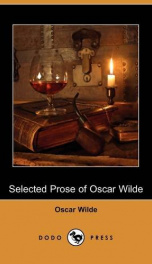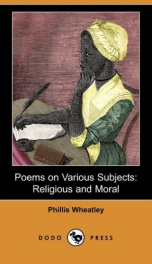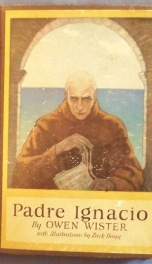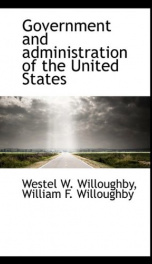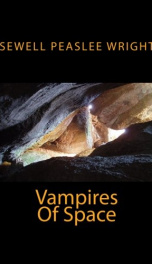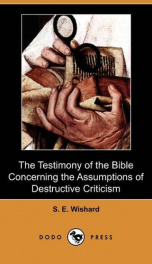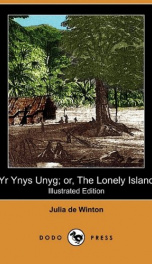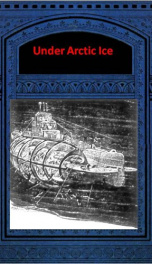Williamson Jack

John Stewart Williamson (April 29, 1908–November 10, 2006), who wrote as Jack Williamson (and occasionally under the pseudonym Will Stewart) was a U.S. writer often referred to as the "Dean of Science Fiction" following the death in 1988 of Robert A. Heinlein.[1] Williamson was born April 29, 1908 in Bisbee, Arizona Territory, and spent his early childhood in western Texas. In search of better pastures, his family migrated to rural New Mexico in a horse-drawn covered wagon in 1915.[2] The farming was difficult there and the family turned to ranching, which they continue to this day. Williamson discovered the local library and used it to educate himself. As a young man, he discovered the magazine Amazing Stories, after answering an ad for one free issue. He strove to write his own fiction, selling his first story at age 20: "The Metal Man" appeared in the Dec. 1928 issue of Amazing Stories. His work during this early period was heavily influenced by A. Merritt.[3] Early on, he became impressed by the works of Miles J. Breuer and struck up a correspondence with him. A doctor who wrote science fiction in his spare time, Breuer had a strong talent and turned Williamson away from dreamlike fantasies towards more rigorous plotting and stronger narrative. Under Breuer's tutelage, Williamson would send outlines and drafts for review.[2] Their first work together was the novel Birth of a New Republic in which Moon colonies were undergoing something like the American Revolution—a theme later taken up by many other SF writers, particularly in Robert A. Heinlein's The Moon Is a Harsh Mistress. Wracked by emotional storms and believing many of his physical ailments to be psychosomatic, Williamson underwent psychiatric evaluation in 1933 at the Menninger Clinic in Topeka, Kansas, in which he began to learn to resolve the conflict between his reason and his emotion.[2] From this period, his stories take on a grittier, more realistic tone. By the 1930s he was an established genre author, and the teenaged Isaac Asimov was thrilled to receive a postcard from Williamson, whom he had idolized, congratulating him on his first published story and saying "welcome to the ranks".[2] Williamson remained a regular contributor to the pulp magazines, though not reaching financial success until many years later. He published many collaborations with the science fiction author Frederik Pohl. He continued to write as a nonagenarian and won both the Hugo and Nebula Awards during the last decade of his life, by far the oldest writer to win those awards.[2] Williamson received his Bachelor of Arts and Master of Arts degrees in English in the 1950s from Eastern New Mexico University (ENMU) in Portales (near the Texas panhandle), joining the faculty of that university in 1960. He remained affiliated with the school for the rest of his life. In the late 1990s, he established a permanent trust to fund the publication of El Portal, ENMU's journal of literature and art. In the 1980s, he made a sizable donation of books and original manuscripts to ENMU's library, which resulted in the formation of a Special Collections department; the library now is home to the Jack Williamson Science Fiction Library, which ENMU's website describes as "one of the top science fiction collections in the world"[4]. In addition, Williamson hosted the Jack Williamson Lectureship Series, an annual panel discussion in which two science fiction authors were invited to speak to attendees on a set topic. The Jack Williamson Liberal Arts building houses the Mathematics, Art, and Languages & Literature Departments of the university. Williamson completed his Ph.D. in English literature at the University of Colorado in Boulder, focused on H.G. Wells' earlier works, demonstrating that Wells was not the naive optimist that many believed him to be. In the field of science, Jack Williamson coined the word terraforming in a science-fiction story published in 1942 in Astounding Science Fiction.[5] In the mid 1970s, Williamson was named a Grand Master of Science Fiction by the Science Fiction Writers of America. He was only the second person to receive this honor. The first was Robert A. Heinlein. After retiring from teaching full-time in 1977, Williamson spent some time concentrating on his writing, but after being named Professor Emeritus by ENMU, he was coaxed back to co-teach two evening classes, "Creative Writing" and "Fantasy and Science Fiction" (he pioneered the latter at ENMU during his full-time professorship days). Williamson continued to co-teach these two classes into the 21st century. In November 2006, Williamson died at his home in Portales, New Mexico at age 98.[6] Despite his age, he had made an appearance at the Spring 2006 Jack Williamson Lectureship and published a 320-page novel, The Stonehenge Gate, in 2005. While attending a Great Books course, Williamson learned that Henryk Sienkiewicz had created one of his works by taking the Three Musketeers of Alexandre Dumas and pairing them with John Falstaff of William Shakespeare. Williamson took this idea into science fiction with The Legion of Space. Desperate for money, he searched for a quick source of income. While most pulps of the time were slow to pay, the recently re-started Astounding was an exception. However, they did not accept novels, so Williamson submitted three short stories and a novelette. Learning that they were also accepting novels for serialization, he sent in The Legion of Space, which was published in six parts. It quickly became a genre favorite, and was quickly collected into a hardcover. The story takes place in an era when humans have colonized the Solar System but dare not go farther, as the first extra-solar expedition to Barnard's Star failed and the survivors came back as babbling, grotesque, diseased madmen. They spoke of a gigantic planet, populated by ferocious animals and the single city left of the evil "Medusae." The Medusae bear a vague resemblance to jellyfish, but are actually elephant-sized, four-eyed, flying beings with hundreds of tentacles. The Medusae cannot speak and communicate with one another via a microwave code. The Falstaff character is named Giles Habibula. He was once a criminal, and can open any lock ever made. In his youth he was called Giles The Ghost. Jay Kalam (Commander of The Legion) and Hal Samdu are the names of the other two warriors. In this story these warriors of the 30th Century battle the Medusae, the alien race from the lone planet of Barnard's Star. The Legion itself is the military and police force of the Solar System after the overthrow of an empire called the Purple Hall that once ruled all humans. In this novel, renegade Purple pretenders ally themselves with the Medusae as a means to regain their empire. But the Medusae, who are totally unlike humans in all ways, turn on the Purples, seeking to destroy all humans and move to the Solar System, as their own world, far older than Earth, is finally spiraling back into Barnard's Star. One of the Purples, John Ulnar, supports the Legion from the start, and he is the fourth great warrior. His enemy is the Purple pretender Eric Ulnar, who sought the Medusae out in the first place, seeking to become the next Emperor of The Sun. The Medusae conquered the Moon, set up their bases there, and went on to attempt conquest of the Solar System. The Medusae had for eons used a greenish, artificial greenhouse gas to keep their dying world from freezing. The Medusae learned from the first human expedition to their world that the gas rots human flesh, and the Medusae use it as a potent chemical weapon, attempting ecological destruction by means of projectiles fired from the Moon. Their vast spaceships also have very effective plasma weapons, very similar to those the Romulans had in a Star Trek episode called Balance of Terror. The Legion works also featured a force field called AKKA which can erase from the Universe any matter, of any size, anywhere, even a star or a planet. AKKA was a weapon of mass destruction and the secret of it was entrusted to a series of women. AKKA was used in the past to overthrow the Purple tyranny. It was also used to wipe out most of the Medusae, though they had tried to steal the secret. When they were wiped out, the Moon where they had established their base was erased out of existence. At the end of the story, John Ulnar falls in love with the keeper of AKKA, Aladoree Anthar, and marries her. Aladoree Anthar is described as a young, blonde woman, beautiful as a goddess. Williamson next wrote The Cometeers which takes place twenty years after The Legion of Space in which the same characters battle another alien race, this one of different origin. In this second tale, they fight The Cometeers who are an alien race of energy beings controlling a "comet" which is really a giant force field containing a swarm of planets populated by their slaves. The slave races are of flesh and blood, but none are remotely similar to humans. The Cometeers cannot be destroyed by AKKA, as they are incorporeal from the Universe's point of view and exist for the most part in an alternate reality. The ruling Cometeers feed on their slaves and literally absorb their souls, leaving disgusting, dying hulks in their wake. It is said that they do so, as they were once fleshly entities themselves of various species. Hence, the ruling Cometeers keep other intelligent beings as slaves and "cattle." They fear AKKA, though, as it can erase all their possessions. They are defeated by the skills of Giles Habibula. Giles broke into a secret chamber guarded by complex locks and force fields that the incorporeal Cometeers could not penetrate. In it the ruler of the Cometeers had kept its own weapon of mass destruction, one that would cause the Cometeers to disintegrate. The ruling Cometeer kept this weapon to enforce its rule over the others of its kind. Once the Cometeers were destroyed, their slaves were ordered by the Legion to take the comet and leave the Solar System, and never return. Another novel, One Against the Legion, tells of a Purple pretender who sets up a robotic base on a world over seventy light years from Earth, and tries to conquer the Solar System via matter transporter technology he has stolen. In this story robots are outlawed, as they are in Dune. The story also features Jay Kalam, lobbying to allow the New Cometeers to leave the Solar System in peace, as many people were demanding that AKKA be used to obliterate the departing swarm of planets once and for all.
do you like this author?
What readers are saying
What do you think? Write your own comment on this book!
write a commentWhat readers are saying
What do you think? Write your own comment on this author!
write a commentBook list
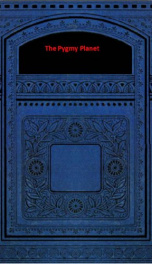
The Pygmy Planet
Series:
Unknown
Year:
Unknown
Raiting:
5/5
The Pygmy PlanetBy Jack Williamson.
Show more
add to favoritesadd In favorites

The Cosmic Express
Series:
Unknown
Year:
Unknown
Raiting:
4.5/5
The Cosmic ExpressBy JACK WILLIAMSON
Show more
add to favoritesadd In favorites
Book list

The Pygmy Planet
Series:
Unknown
Year:
Unknown
Raiting:
5/5
The Pygmy PlanetBy Jack Williamson.
Show more
add to favoritesadd In favorites

The Cosmic Express
Series:
Unknown
Year:
Unknown
Raiting:
4.5/5
The Cosmic ExpressBy JACK WILLIAMSON
Show more
add to favoritesadd In favorites
What readers are saying
What do you think? Write your own comment on this author!
write a commentif you like Williamson Jack try:
readers also enjoyed
What readers are saying
What do you think? Write your own comment on this author!
write a commentGenre
if you like Williamson Jack try:
readers also enjoyed
Do you want to exchange books? It’s EASY!
Get registered and find other users who want to give their favourite books to good hands!

